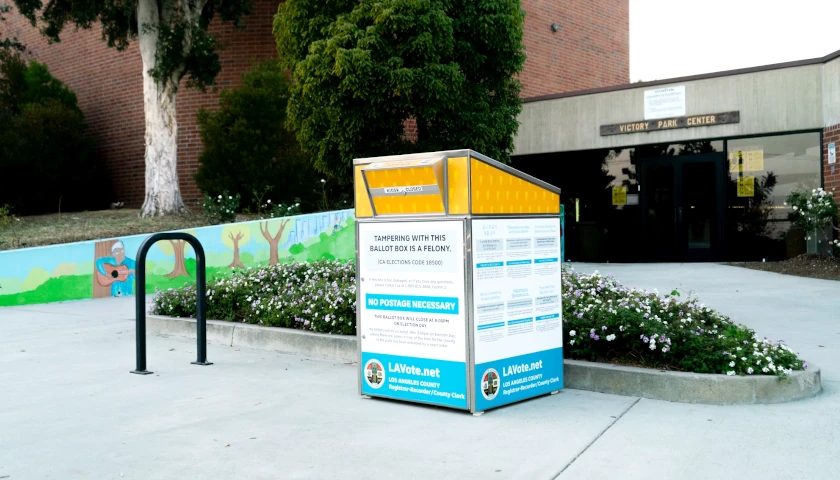by Peter W. Wood
The National Association of Scholars opposes the proposal, “Educating for American Democracy.” The proposal has attracted some well-meaning supporters, but they are mistaken about what Educating for American Democracy—EAD—would bring into being.
Roadmap to Educating for American Democracy is a “framework” that prescribes how American K-12 schools should teach civics. That word “framework” is part of EAD’s official self-description, and it deserves a closer look. In this case, the so-called “framework” is really a well-developed plan to impose a politically progressive program of instruction on almost all American students. The framework determines the ideas to be taught and the means by which these ideas would be conveyed and enforced. The content of EAD is antithetical to how the vast majority of Americans understand our country.
Precedents
We have been here before, several times. In the early 1990s, the academic Left hijacked the National History Standards. Under the Left, those “standards” projected a dismal view of the nation’s past, but a public outcry, led by former chairman of the National Endowment for the Humanities, Lynne Cheney, prompted a retreat. In January 1995, the U.S. Senate voted 99 to 1 to repudiate those standards.
Though they were officially shelved, the National History Standards retained a strong following among college history professors and a hefty number of high school history teachers. Those educators helped the National History Standards to become a kind of stealth curriculum in many of the nation’s schools, which goes some distance toward explaining the formation of political attitudes among people who attended school in that era. It also contributed to the popularity of works of pseudo-history such as Howard Zinn’s A People’s History of the United States.
Among the successors to the National History Standards was the 2014 revision of the College Board’s Advanced Placement U.S. History Standards (APUSH). Twenty years after the 1994 standards were officially set aside, the College Board imposed essentially the same partisan view on the nation’s most important (and most popular) secondary school history curriculum and examination. The National Association of Scholars blew the whistle on this capture-the-flag maneuver, and the College Board officially backed down—though once again, more in appearance than in substance.
Lately, the New York Times’ “1619 Project,” reconfigured by the Pulitzer Center as the centerpiece of a new history curriculum, has been introduced into tens of thousands of classrooms around the country. Controversy has rightly erupted over teaching this body of false premises and fake facts. The National Association of Scholars has been in the thick of this with our “1620” rebuttal.
EAD has one other important precedent—perhaps the most important. In 2009 the Obama Administration attached its “The Race to the Top” program to the American Recovery and Reinvestment Act passed by Congress in response to the Great Recession. Race to the Top allocated large amounts of money to states that embraced the Common Core State Standards. That was a doubly misleading name, since what was imposed was effectively a curriculum in math and English, not a set of standards; and far from originating in the states, these “standards” were imposed from above. The Common Core originally was supposed to include history and civics as well, but the proponents backed off those subjects as likely to stir ferocious opposition. The National Association of Scholars played a major role in rallying that opposition.
Common Core quickly began one of the most hated curricular reforms in the history of American schooling, and its results have included plummeting academic performance among the students on which it was imposed. These days we seldom hear the self-congratulations of the “reformers” who, for a while, imagined they had at last triumphed over the forces of traditionalism in education.
Once again, however, public repudiation of their reforms did little to stay the ambition of the reformers. EAD is the return of Common Core under a new label and, this time, applied to history and civics. Like the Common Core, it pretends to be a grassroots initiative, while in fact it is a nationally coordinated effort by a leftist political elite; and once again it is posed as a “framework,” not a nuts-and-bolts curriculum, though it specifies every detail worth specifying.
Is Support for EAD Cross-Ideological?
EAD is a device for transforming the way K-12 American schools teach civics. Its advocates claim it represents the views of “a diverse and cross-ideological group of scholars and educators.” That’s one of those statements—characteristic of the program—that has a germ of truth buried in a mountain of dross. A handful of conservatives have indeed endorsed EAD, while legions of progressives are championing it.
The presence or absence of conservative support might not matter as far as NAS is concerned. Though we are generally seen as a voice of conservatives in higher education, we never signed up for that role. Rather, we are an independent and independently minded group and reserve the right to make up our own minds, both as individuals and as an organization. (Which is to say, we take official stands, but we respect the right of members to go their own ways.)
In the case of EAD, we have been following the development of the ideas in this framework for nearly a decade and watching the framework itself unfold in the last year. Until now we have not taken a public position. Now we will. In the view of the National Association of Scholars, Educating for American Democracy is a seriously wrong turn in the way our country should go about preparing young people for American citizenship.
Why We’re Concerned
Those who have followed our work on civics education over the years will not be surprised by that announcement. In fall 2012 we published a symposium on President Obama’s “Call for a New Civics.” We followed that with a multiyear in-depth examination of how this “new civics” was playing out in colleges and universities,” published the results in a hefty tome titled Making Citizens: How American Universities Teach Civics (2017), and followed that with the closely related Social Justice Education in America (2019). Earlier this year we convened a “Civics Alliance,” a coalition dedicated to defending and restoring true civics education across the United States. And we have added a full-time staff member who works exclusively on civics issues.
It is part of the explicit mission of NAS to uphold the standards of a liberal arts education that fosters intellectual freedom, searches for the truth, and promotes virtuous citizenship.
Our focus over the years, of course, has been on higher education, but we have never lost sight that K-12 education and college are joined together. Colleges prepare the teachers; schools prepare the students; the values inculcated among college students eventually become the values teachers inculcate in classrooms across the country. When colleges teach future teachers to regard American society through a lens of cynicism, that cynicism will return in the minds of college freshmen who know nothing else.
EAD Presents Itself
Educating for American Democracy is a sprawling enterprise. For those who are making a first acquaintance with it, here is a primer.
Roadmap to Educating for American Democracy breaks down EAD into seven themes and “vertically spirals” these “across four grade bands (K-2, 3-5, 6-8, 9-12). Each grade band is presented as a cluster of “thematic questions,” “Key concepts,” and a “design challenge.”
Theme 5, for example, is “Constitutional & Social Transformation—A Series of Refoundings?”
Some of the Civics Thematic Questions are “What is a just society?” and “How do laws and social structures change?”
Some of the K-5 key concepts include, “Analyze why and how communities change and the causes and consequences of conflict” and, “Examine the institutional and extra-institutional strategies that people have used to make changes to society.”
These are followed with sections on “Driving Questions” and “Sample Guiding Questions” for the various grade levels. A “k-12 Driving Question,” for example, is “How have people made changes to the community?” A “k-12 Sample Guiding Question,” is “What changes have you seen in your school community.”
The EAD “Roadmap” is essentially a sales brochure. It aims to play down the controversial aspects of EAD and play up its wholesomeness. Even so, to read it closely is to become concerned about the whole EAD undertaking, which puts progressive political views front and center and asks teachers at every level to “drive” views that are at odds with traditional and well-attested concepts of American history and civics.
Educating for American Democracy: Excellence in History and Civics for All Learners is a 33-page, much more detailed account of the ideas embedded in EAD. It begins with an explanation of how and why civics and history have been “neglected” and it explains the origins of the EAD Roadmap. Here also are more in-depth explanations of the seven themes, the “Six Core Pedagogical Principles,” and “The Five Design Challenges.” The document comes with five appendices, including “A Call to Civics Duty and Action” and “Implementation Phases.”
EAD’s Partners
iCivics is one of many nonprofit organizations that has strongly supported EAD. iCivics itself was founded in 2008 by Sandra Day O’Connor after she retired from the U.S. Supreme Court. The original idea was to make civics instruction more attractive to children by creating educational games that embedded civics lessons. It has attracted major support from the Gates Foundation and the MacArthur Foundation, but its video game approach to instruction has been criticized as part of the dumbing down of U.S. history standards.
Generation Citizen is another of the nonprofits that aims to reform civics instruction. Its mission is “working to transform civics education so that young people are equipped and inspired to exercise their civic power.” Its “vision” is “a just, inclusive democracy that is responsive to all young people.” It lays out its approach in unmistakable terms,
THE PROBLEM: YOUNG PEOPLE ARE NOT PARTICIPATING IN POLITICS
THE SOLUTION: ACTION CIVICS
Generation Citizen believes every student has the right to learn how to effectively participate as citizens. We inspire civic participation through a proven state standards-aligned action civics class that gives students the opportunity to experience real-world democracy.
Andrew Wilkes, senior director for policy and advocacy at Generation Citizen, serves on the Advisory Council of Educating for American Democracy. Wilkes wrote in 2014 that “Socialism, or something like it, is the settled conclusion of a society that values democracy.”
CivXNow is largely the cat’s paw of iCivics, although it bills itself as “a national cross-partisan coalition of over 100 organizations focused on improving our nation’s K-12 in and out-of-school civic education.” Its purpose is:
Recognizing that preparing our youth to assume the responsibilities and understand their rights as active participants in the civic life of this great nation is essential to the health of our democratic republic, the CivXNow Coalition pledges to help every K-12 school in the nation fulfill their historic and vital civic mission. We pledge to ensure that every young person acquires the civic knowledge, skills, and behaviors necessary for informed, authentic, and engaged civic participation.
The supporters of EAD frequently use CivXNow as their mouthpiece, and their means to organize support for the Civics Secures Democracy Act, and other federal bills that will fund and grease the wheels for Protest Civics.
Terms
New civics, civic engagement, social justice civics, action civics, culturally responsive teaching, protest civics. These are some of many terms used by the advocates and critics of this new form of civics which is, at bottom, teaching children how to be activists dedicated to progressive political goals.
The Policy Landscape
EAD is officially a “framework,” albeit pretty close to a curriculum. A framework, however, can be elaborated in numerous ways, and EAD, in principle, is open to such elaboration. There is no single curriculum that is EAD pure and simple, but rather hundreds of EAD-oriented proposals. Many of these are introduced at the state level, where EAD-inspired activist groups have pushed for—and sometimes succeeded in getting—legislatures to pass laws that would either mandate some version of Protest Civics or smooth the way for activist-minded school districts to adopt their own versions of Protest Civics.
EAD will do for civics what Common Core standards did for reading and math. The Common Core standards also pretended not to be a national curriculum—but they were one, because the standards forced every state and town to “align” their standards with Common Core. EAD will use the same tactics to impose Protest Civics on America.
The policy landscape also includes proposed federal bills such as the Civics Secures Democracy Act, which would create a pipeline of federal money to states that adopt some version of the new civics. That bill and several like it are wired to ensure that progressive Protest Civics will get nearly all the funds.
Even if the federal funding is stopped in its tracks, the initiatives to plant Protest Civics in the nation’s schools will continue. The “1619 Project,” Critical Race Theory, the racist theory that labels itself “antiracism,” and a host of other curricular add-ons are part of this broader effort. Protest Civics may well be the most encompassing curricular vehicle for radical activism, but it has also been the hardest for the public to recognize. That’s because Protest Civics drapes itself in the flag. Its proponents have learned to use a dictionary full of words that sound constructive and even patriotic. And they have persuaded a small collection of right-of-center professors and intellectuals to sign on. Every activist can and does say, we’re bipartisan, because right of center individuals support Educating for American Democracy. They then use that cover to push to impose radical Protest Civics on America’s children.
No Surrender
I will take it that those who think EAD is a good idea are sincere. James R. Stoner Jr. and Paul Carrese ask at National Review Online, “What’s So Un-American about a Shared American Civics?” This they did by way of justifying their own support for EAD. Their question deserves an answer, and the answer is that a “shared American Civics” would be a fine idea. But EAD is not a “shared American Civics.” It is designed with Swiss clock precision to chime on all the notes of America, land of oppression. The EAD website already features a lesson plan that “encourages teens to ‘claim power’ and look for ‘systems of oppression.’” The main gear in the watch—the “going train” in watch parlance—is the concept of “power.” In Protest Civics, a minority has always had it to the disadvantage of everyone else, and the purpose of studying civics is to figure out how to get yours. It is “action civics” because you have to be prepared to take action to secure your power. It is Protest Civics because protest is the tool of the (relatively) powerless in the face of the illegitimate power of the oppressors.
All of this is dressed up in Sunday-go-to-church clothes in EAD, but it is there to be read if you read closely, and there to be ignored if you want to dampen all your suspicions as to how the radical Left really operates. Stanley Kurtz replied to Stoner and Carrese in an NRO article aptly titled “Consensus by Surrender.”
We at NAS are not about to surrender. As for consensus, it can be a good thing, but like a lot of good things, it has to be weighed in the balance. In this case, the balance says no. NAS has laid out its reasons for opposing the “1619 Project,” CRT, and related ideologies. We now add EAD to the collection of ideological enthusiasms that bid America to engage in an ideological war against our highest and best ideals.
Stoner and Carrese were kind enough to speak well of the National Association of Scholars’ Civics Curriculum Statement. We welcome their endorsement. But America can only restore its civics education by rejecting the EAD.
– – –
Peter W. Wood is president of the National Association of Scholars. He is an anthropologist and author of A Bee in the Mouth: Anger in America Now (Encounter Books, 2007) and of Diversity: The Invention of a Concept (Encounter Books, 2003). His articles have appeared in Partisan Review, National Review Online, and the Chronicle of Higher Education.




